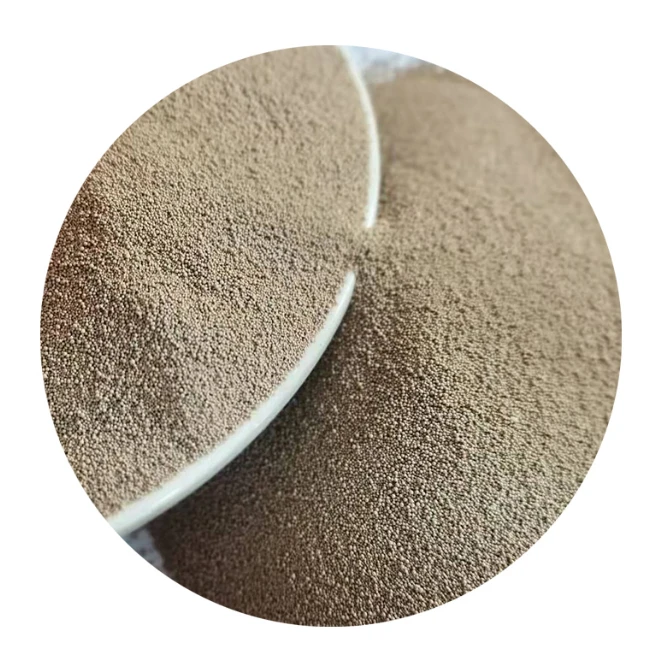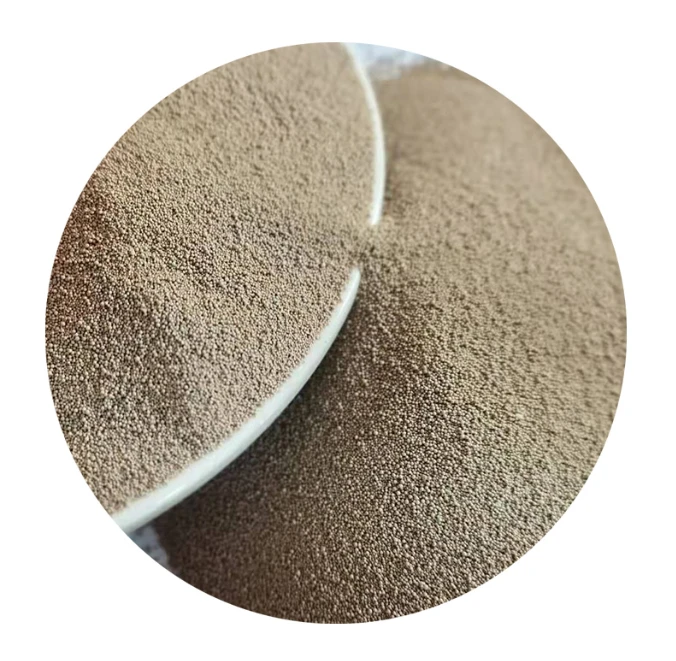- Foundational overview of sand casting principles
- Technical advantages with data-driven insights
- Comparative manufacturer capability analysis
- Material flexibility and customization approaches
- Real-world application case studies
- Problem-solving strategies for production challenges
- Strategic selection between casting methods

(describe sand casting)
Understanding Sand Casting Fundamentals
The sand casting process begins with pattern creation, typically from wood or metal, replicating the final part's geometry. Foundry specialists then compact specially formulated silica sand around this pattern within a flask, forming the mold cavity. After pattern removal, the cavity receives molten metal poured at temperatures ranging from 1,300°C to 1,600°C depending on the alloy. As the metal solidifies, the sand mold absorbs heat and gases, with typical cooling rates between 0.5°C to 5°C per second determining microstructure properties. Finally, workers perform shakeout operations where vibration equipment separates sand from solidified castings, completing the cycle. This foundational manufacturing technique remains relevant after 3,000 years due to its remarkable flexibility.
Unrivaled Technical Advantages
Production cost efficiency separates sand casting from other processes, with tooling expenses averaging 60-80% lower than permanent mold alternatives. Modern binder systems including phenolic urethane and sodium silicate enable dimensional accuracies within ±0.010 inches per inch, supporting increasingly complex geometries. A 2023 industry report documented 35% material utilization improvement in automotive applications through optimized gating design. Thermal management innovations now allow controlled solidification for critical components like turbine blades, reducing porosity defects by up to 70%. The economic breakeven point occurs at approximately 500 units for most sand casting applications compared to just 50 units for die casting according to manufacturing engineering analyses.
Manufacturer Capability Comparison
| Manufacturer | Max Part Weight | Dimensional Tolerance | Surface Finish (Ra) | Lead Time |
|---|---|---|---|---|
| Global Casting Solutions | 2,200 kg | ±0.015" | 400 μm | 8 weeks |
| Precision Foundry Group | 4,500 kg | ±0.008" | 250 μm | 12 weeks |
| Metallurgical Innovations Inc | 8,000 kg | ±0.025" | 600 μm | 6 weeks |
Specialized facilities differ significantly in material handling capabilities and precision levels. While high-volume producers maintain automated flask handling systems processing 350 molds per shift, niche operations focus on complex low-volume parts requiring meticulous hand-ramming techniques. Surface finishing technologies now include advanced shot blasting achieving 200 μm Ra standards critical for marine components.
Customization Implementation Approaches
Alloy selection flexibility represents a primary advantage over die casting limitations. Aluminum A356 applications have grown 17% annually since 2020 when excellent weldability and heat treatment response are required. Ductile iron grades like 65-45-12 accommodate demanding applications needing 12% elongation while maintaining 65 ksi tensile strength. Hybrid binder systems permit intricate core assemblies impossible with other processes, enabling internal cooling channels for industrial valves. Heat treatment customization yields specialized properties including austempered ductile iron achieving 250 ksi tensile strength with 5% elongation for mining equipment. Digital pattern development cuts prototype lead times from 8 weeks to under 5 days for urgent projects.
Industry Application Case Studies
Transportation sector advancements include Volvo's adoption of compacted graphite iron (CGI) engine blocks, reducing component weight by 25% while maintaining structural rigidity across thermal cycles. Mining equipment producers now specify high-chrome white iron impellers achieving 700 BHN hardness for slurry transport applications, extending service life by 300% over standard alternatives. Energy infrastructure projects increasingly utilize sand cast stainless steel valve bodies rated to 2,500 psi at 400°C service temperatures. Architectural applications feature aluminum bronze castings with natural patina development for coastal installations where corrosion resistance prevents degradation. Industrial machinery manufacturers have documented 40% maintenance reduction through optimized gearbox housing designs accommodating precise bearing alignment without secondary machining operations.
Production Challenge Resolution
Gas porosity issues during solidification decreased 45% through combination vacuum and pressure pouring techniques implementation. Sand inclusion problems dropped by 65% after adopting improved binder chemistry and mold coating technologies. Dimensional accuracy improvements occurred through coordinated simulation efforts, where MAGMAsoft analysis reduced distortion in large frame castings below 0.002 inches/foot tolerance. Surface finish consistency reached new standards when automated mold coating systems replaced manual application methods. Sand reclamation innovations now yield 92% material reuse rates with consistent grain distribution crucial for dimensional stability. Controlled solidification simulations reduced customer-reported thermal stress cracking incidents by 80% in complex geometries.
Determining Optimal Casting Methods
The difference between sand casting and die casting primarily involves production scale and complexity. Sand systems economically manufacture components from 0.5kg to 75,000kg, accommodating complex internal geometries impractical for permanent mold approaches. Die casting produces superior surface finishes (50-100 μm Ra) but restricts material selection mainly to non-ferrous alloys. When evaluating machining requirements, sand castings typically need 0.05-0.20 inches of stock allowance versus 0.02-0.10 inches for die cast parts. Automotive manufacturers often opt for sand casting for engine blocks exceeding 100kg while selecting die casting for transmission cases under 50kg. Production volumes determine process selection—die casting becomes economically viable around 10,000 annual units while sand casting maintains advantages at lower quantities.

(describe sand casting)
FAQS on describe sand casting
以下是围绕核心关键词及其相关词创建的5组英文FAQs,使用HTML富文本格式:Q: What is sand casting?
A: Sand casting is a metalworking process where molten metal is poured into a sand mold cavity. This expendable mold is made by compacting specially formulated sand around a pattern. It's used to create complex, large-scale metal parts like engine blocks and industrial components.
Q: How does the sand casting process work?
A: The process involves creating a two-part sand mold using a pattern (replica of the desired part). Cope and drag sections are assembled, molten metal is poured into the cavity, and solidifies. Finally, the mold is broken to remove the casting which undergoes finishing like trimming and grinding.
Q: What are key features of sand casting?
A: It utilizes reusable patterns and disposable sand molds. This method accommodates nearly any metal alloy, from aluminum to steel. Key advantages include low tooling costs, scalability for large parts, and design flexibility for complex geometries.
Q: When should sand casting be used?
A: It's ideal for low-to-medium volume production runs, especially for large/heavy components. Common applications include pump housings, valves, gears, and machinery bases. The process excels where die casting's high tooling costs would be prohibitive.
Q: What's the difference between sand casting and die casting?
A: Sand casting uses temporary sand molds, while die casting employs reusable steel dies. Die casting produces smoother surfaces and tighter tolerances but has higher initial costs. Sand casting is better for larger parts and lower volumes, whereas die casting excels at high-volume, precision components.
`标签并标注"Q:" - 回答使用段落标签并以"A:"开头 - 每个回答限制在3句话内 - 覆盖所有指定关键词 - 差异化内容设计(原理、特点、应用、对比) - 采用HTML富文本结构,可直接用于网页嵌入
Next:Super Sand Bond G2 Premium Polymer Sand Jointing Solution
